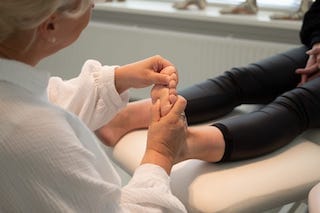Our therapeutic soles are manufactured in our own laboratory, which allows us to guarantee high quality and fast delivery
After referral from a doctor, the practitioner conducts an interview (anamnesis), followed by an extensive examination with the aim of identifying the cause of the complaints. The examination consists of the following parts:
The practitioner will send a medical report to the referrer with the diagnosed findings and therapy.
